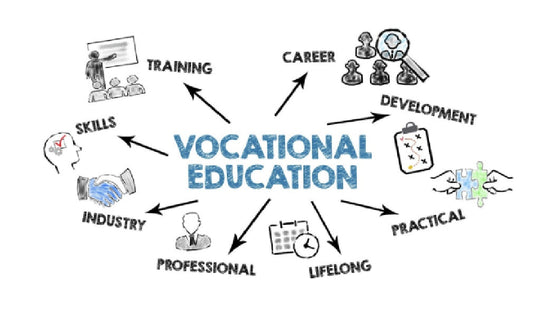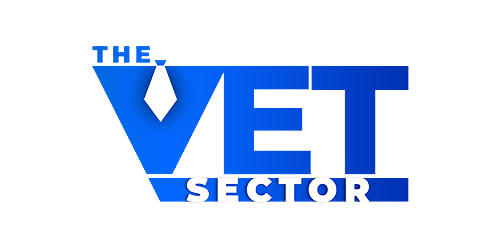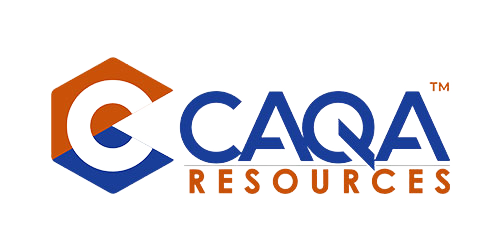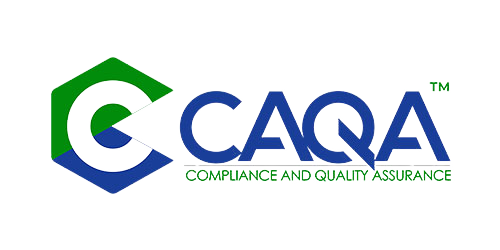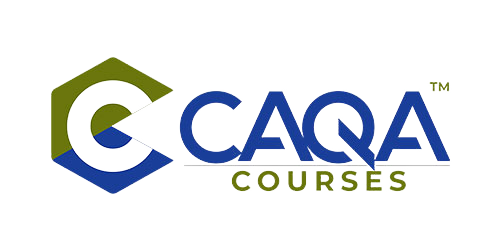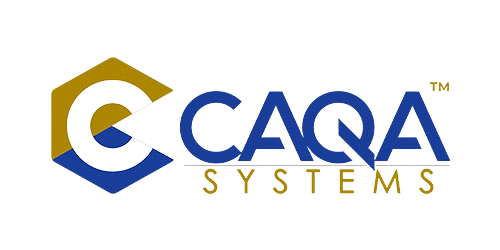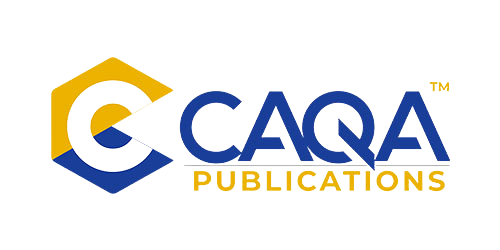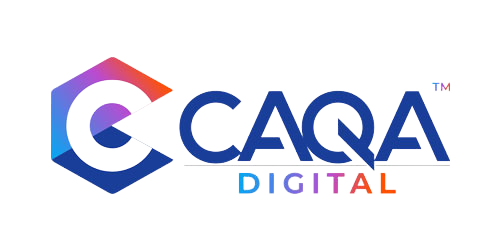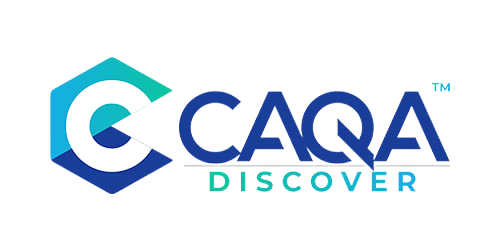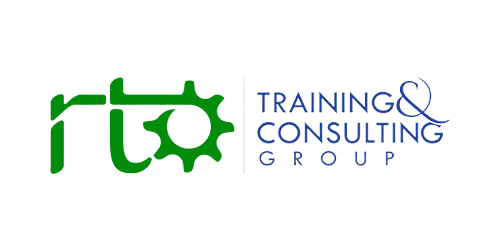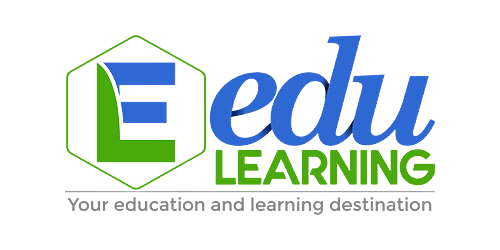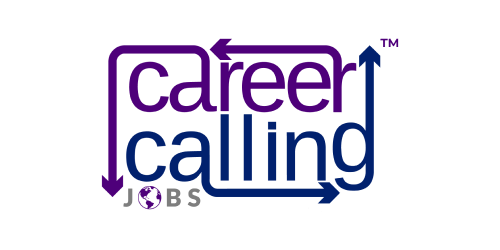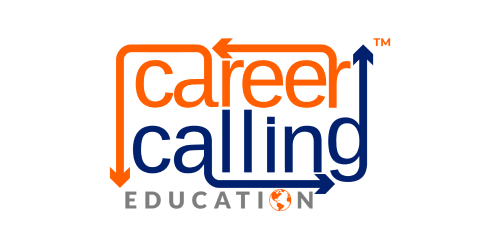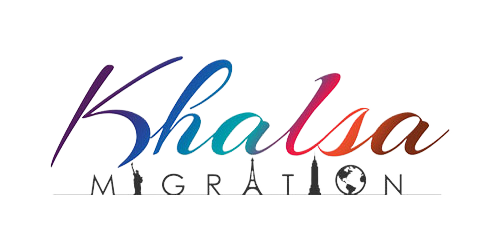THE CONVERGENCE MOMENT: WHY TECHNOLOGY, WORKFORCE, AND CULTURE ARE REDEFINING TRAINING
As Australia's vocational education and training sector races toward the July 2025 implementation of the revised Standards for RTOs, a far more profound transformation is taking shape beneath the surface. Beyond the regulatory changes—significant as they are—three explosive forces are converging to redefine what constitutes quality, relevance, and success in vocational education: technological revolution, workforce reinvention, and cultural recalibration.
This convergence represents more than evolutionary change; it is a revolutionary moment that will separate forward-thinking providers from those anchored to outdated paradigms. The organisations that thrive in this new landscape will be those that recognise these deeper currents of change and position themselves not merely for compliance but for leadership in a fundamentally transformed educational ecosystem.
The stakes could not be higher. These converging forces will determine not just the commercial viability of individual RTOs but the credibility of vocational qualifications, the work-readiness of graduates, and ultimately Australia's productivity and competitive position in the global economy. This is not hyperbole but the sober assessment of sector leaders who recognise that the 2025 Standards are merely the visible manifestation of much deeper shifts in expectations, capabilities, and values.
This article explores these seismic forces reshaping vocational education, identifies the opportunities and threats they present, and offers a strategic framework for RTOs seeking not just to survive but to lead in this new era. The future belongs not to those who wait for regulatory guidance but to those who anticipate and embrace the fundamental transformations already underway.
THE TECHNOLOGICAL REVOLUTION: AI RESHAPES THE TRAINING LANDSCAPE
The explosive growth of artificial intelligence and digital technologies is not merely changing how training is delivered—it is fundamentally redefining what is possible, necessary, and valuable in vocational education.
THE AI ACCELERATION: FROM DAYS TO MINUTES
The pace of technological change in the VET sector has reached a tipping point. Tasks that once consumed days of trainer time can now be accomplished in minutes:
-
Session plans that previously required hours of manual development can be generated in minutes using AI tools
-
Training materials, including presentations and handouts, can be created through platforms like PresentationsAI with minimal human intervention
-
Assessment validation, historically a time-intensive process, can be streamlined through AI-assisted analysis and recommendation engines
-
Administrative documentation, from policies to compliance evidence, can be drafted, formatted, and cross-referenced through intelligent templates
This acceleration is not merely a matter of convenience but represents a fundamental shift in how RTOs allocate their most precious resource: human time and attention. Organisations that embrace these technologies can redirect trainer expertise from administrative tasks to the high-value activities that genuinely impact student outcomes—personalised support, real-time feedback, and authentic skill development.
THE ADOPTION IMPERATIVE: ADAPT OR DISAPPEAR
The technological revolution creates an existential challenge for both individual trainers and RTOs as organisations. The message from sector leaders is unequivocal:
-
Trainers who resist technological adoption risk professional obsolescence as efficiency expectations rise
-
RTOs that maintain manual processes will find themselves at an unsustainable cost disadvantage
-
Digital literacy is no longer optional but a core professional requirement across all VET roles
-
The competitive landscape will increasingly favour organisations that leverage technology for both efficiency and educational effectiveness
This adoption imperative does not suggest that technology will replace quality trainers. Rather, it indicates that quality trainers will be those who harness technology to amplify their impact, extend their reach, and focus their expertise where it adds the most value—in the human dimensions of learning that machines cannot replicate.
THE ENHANCEMENT PERSPECTIVE: TOOLS FOR TRAINERS, NOT REPLACEMENTS
The most sophisticated understanding of educational technology recognises that AI and digital tools are enhancements to human expertise, not replacements for it:
-
AI can generate initial content, but experienced trainers provide the contextual refinement that makes it relevant and effective
-
Digital systems can track student engagement and progress, but skilled educators interpret this data and design appropriate interventions
-
Learning management systems can facilitate access to resources, but quality trainers create the supportive relationships that sustain motivation and overcome barriers
-
Virtual simulations can provide practice environments, but expert feedback remains essential for developing nuanced professional judgment
This enhancement perspective offers a more productive frame than the fear-based narrative of technology as a threat. The most successful RTOs will be those that help their workforce develop a collaborative relationship with technology, using digital tools to handle routine tasks while focusing human expertise on the complex, interpersonal dimensions of education that remain beyond algorithmic capabilities.
THE WORKFORCE REINVENTION: FROM CREDENTIALS TO CAPABILITY
Parallel to the technological revolution is a fundamental reinvention of the VET workforce—a shift from credential-based validation to capability-based excellence that challenges long-established assumptions about trainer development and quality.
THE EXPERTISE CRISIS: QUALIFICATION WITHOUT CAPABILITY
A troubling pattern has emerged in parts of the VET sector: the proliferation of accelerated training programs that produce technically qualified but practically unprepared trainers and assessors.
-
Certificate IV in Training and Assessment programs completed in as little as 10 days raise serious questions about the depth and authenticity of trainer preparation
-
Many working trainers have never seen or do not understand fundamental compliance documents like Training and Assessment Strategies or trainer matrices
-
Technical qualification often exists without the contextual understanding and experience needed to apply these skills effectively
-
The gap between formal credentials and actual capability undermines both compliance and quality
This expertise crisis represents more than an implementation challenge—it strikes at the very heart of the VET sector's credibility and purpose. If those responsible for developing workplace competence lack that competence themselves, the entire qualification system is compromised.
THE MENTORSHIP IMPERATIVE: APPRENTICING THE TRAINERS
Emerging as a counterforce to accelerated credentialing is a renewed emphasis on mentorship, apprenticeship, and guided development for VET professionals:
-
Extended mentorship periods where new trainers work alongside experienced practitioners
-
Structured observations and feedback from both peers and supervisors
-
Graduated responsibility that aligns with demonstrated capability rather than credential acquisition
-
Documented evidence of actual practice, not just theoretical understanding
This apprenticeship approach to trainer development mirrors the very philosophy that should underpin vocational education itself—the recognition that true competence emerges through guided practice and reflection in authentic contexts, not merely through content exposure and assessment completion.
THE CONTINUOUS DEVELOPMENT CULTURE: BEYOND COMPLIANCE TO GROWTH
The VET Workforce Blueprint signals a shift from episodic, compliance-driven professional development to continuous growth cultures within RTOs:
-
Monthly peer presentations where staff share expertise on compliance, vocational topics, or pedagogical approaches
-
Regular communities of practice that address emerging industry trends and their implications for training
-
Technology upskilling is integrated into normal workflows rather than treated as separate activities
-
Leadership development that encompasses not just management skills but also quality championing and cultural stewardship
This continuous development approach recognises that in a rapidly evolving sector, initial qualification—no matter how rigorous—can never be sufficient. Excellence requires ongoing renewal of knowledge, skills, and perspective throughout a trainer's career.
THE CULTURAL RECALIBRATION: VALUING QUALITY AND EDUCATION
Perhaps the most profound transformation underway is a cultural recalibration—a fundamental shift in how vocational education is valued, delivered, and experienced across the Australian landscape.
THE VALUE PROPOSITION: EDUCATION AS INVESTMENT, NOT COMMODITY
A significant cultural challenge identified by sector leaders is the undervaluation of education—particularly vocational education—in the Australian context:
-
Domestic students and employers often seek the cheapest and fastest pathways rather than the most effective ones
-
Price competition has driven a "race to the bottom" that undermines quality and sustainability
-
The focus on credential acquisition rather than capability development has eroded the perceived value of comprehensive training
-
International students often demonstrate greater willingness to invest in quality education than their domestic counterparts
This devaluation of vocational education creates a vicious cycle: reduced investment leads to compromised quality, which further diminishes perceived value. Breaking this cycle requires a fundamental cultural shift in how education is understood—not as a commodity to be acquired at minimum cost but as an investment in future capability and opportunity.
THE QUALITY IMPERATIVE: EXCELLENCE AS NON-NEGOTIABLE
The 2025 Standards signal a regulatory push toward quality, but the deeper transformation requires a cultural commitment to excellence that transcends compliance:
-
Quality must be understood as the foundation of business sustainability, not a compliance burden
-
Shortcuts in training and assessment must become culturally unacceptable within organisations
-
The entire workforce must share ownership of quality outcomes, not just compliance specialists
-
Marketing and recruitment practices must align with genuine quality commitments, even when this means turning away potential students or charging premium prices
This quality imperative represents not just an ethical position but a strategic one. As the sector matures and regulatory requirements intensify, organisations built on volume rather than value will find themselves increasingly vulnerable to both compliance action and market rejection.
THE LEARNING ECOSYSTEM: WORK AND EDUCATION INTERTWINED
Another cultural shift reshaping the sector is the progressive dissolution of boundaries between education and work:
-
The new standards' emphasis on work-integrated learning reflects broader recognition that skill development cannot be isolated from application contexts
-
Industry engagement is evolving from tokenistic consultation to genuine partnership in training design and delivery
-
The concept of competency is being recalibrated to emphasise demonstrated capability across multiple authentic contexts
-
The "four A's" framework—Acquisition, Absorption, Application, and Assessment—is gaining traction as a model for ensuring genuine work-readiness
This integration of learning and work recognises that vocational education is not primarily about knowledge transfer but about capability development—a process that necessarily spans educational and workplace environments.
THE REMOTE REVOLUTION: GEOGRAPHICAL FREEDOM AND LOCAL UNDERSTANDING
Overlaying these transformations is a profound shift in how and where vocational education professionals work—a change accelerated by the pandemic but sustained by its demonstrated benefits for both individuals and the sector.
THE LOCATION LIBERATION: EXPERTISE BEYOND METROPOLITAN BOUNDARIES
The rapid adoption of remote work has fundamentally changed the geography of vocational education:
-
VET professionals are increasingly working from mobile locations, including caravans that function as travelling offices
-
Expertise is no longer concentrated in metropolitan centres but distributed across regional and remote areas
-
Digital connectivity enables professionals to maintain organisational engagement while enjoying lifestyle flexibility
-
The traditional distinction between "field" and "office" roles has blurred as technology enables remote administrative functions
This location liberation creates significant opportunities, not just for work-life balance but for deeper engagement with diverse communities and training contexts across Australia's vast geography.
THE LOCAL INSIGHT: PROXIMITY CREATES UNDERSTANDING
Perhaps the most valuable aspect of this geographical flexibility is the enhanced understanding of local challenges and opportunities:
-
VET professionals working in remote areas gain firsthand insight into the unique circumstances of regional communities
-
Direct engagement with local employers builds stronger industry relationships and more relevant training approaches
-
Understanding of implementation challenges in diverse contexts informs more practical policy and compliance frameworks
-
The gulf between metropolitan planning and regional execution narrows as professionals experience both perspectives
This enhanced local understanding represents a powerful counterbalance to the historically city-centric nature of educational policy and practice, creating opportunities for more nuanced, responsive approaches to vocational education across Australia's diverse regions.
THE POLICY PERSISTENCE: REFORM BEYOND POLITICAL CYCLES
A question that perpetually hovers over sector reform is whether changes will endure beyond political transitions—a legitimate concern given the history of policy volatility in vocational education.
THE HISTORICAL TURBULENCE: STANDARDS IN CONSTANT FLUX
The sector's experience with regulatory change creates understandable scepticism about long-term stability:
-
Major updates to standards and frameworks occurred in 1999, 2002, 2005, 2007, 2011, 2012, and 2015
-
New sets of standards have historically been introduced every 3-4 years on average
-
Each change has required significant adaptation, investment, and reorientation from RTOs
-
The cumulative effect has been a compliance-focused culture responsive to regulatory shifts rather than educational outcomes
This history of turbulence provides context for concerns about whether the 2025 Standards represent a durable framework or yet another transitional phase in an ongoing cycle of regulatory reinvention.
THE BIPARTISAN FOUNDATION: AGREEMENT ACROSS POLITICAL DIVIDES
Despite this historical pattern, there are strong indicators that the current reforms have unusual durability:
-
The 2025 Standards are not the product of a single government but reflect years of bipartisan consensus-building
-
All state and territory leaders have signed the VET heads of agreement, creating unprecedented jurisdictional alignment
-
The shift toward outcome-based quality and industry relevance transcends particular political ideologies
-
The legislative instruments underpinning the standards are already in place, creating significant barriers to wholesale reversal
This bipartisan foundation suggests that while refinements and adjustments will inevitably occur, the fundamental direction—toward outcome-focused, industry-aligned, and quality-driven vocational education—is likely to persist beyond electoral cycles.
THE IMPLEMENTATION REALITY: CHANGE BEYOND REGULATION
Perhaps most importantly, the transformations reshaping vocational education extend far beyond regulatory frameworks to encompass technological, workforce, and cultural dimensions that operate independently of political cycles:
-
The technological revolution will continue regardless of regulatory specifics
-
Industry demands for work-ready graduates transcend particular policy formulations
-
Cultural shifts in how education is valued develop over decades, not electoral terms
-
The economic imperatives driving quality and relevance are constants in a competitive global environment
This multi-dimensional nature of change means that even if specific regulatory details evolve, the broader transformation of vocational education will continue along its current trajectory.
THE FUNDING FRACTURE: MARKET SEGMENTATION AND PROVIDER DIVISION
Amidst these broader transformations, specific policy decisions—particularly around funding—have created significant tensions within the provider ecosystem.
THE PUBLIC-PRIVATE DIVIDE: UNEVEN PLAYING FIELDS
The introduction of fee-free TAFE has intensified longstanding tensions between public and private providers:
-
Private RTOs face a significant competitive disadvantage when public institutions offer similar qualifications for free
-
This funding disparity creates market segmentation that may undermine provider diversity and specialised expertise
-
The focus on cost rather than value reinforces the cultural undervaluation of education
-
Geographic coverage and specialised offerings may be compromised as funding distorts market signals
This public-private divide represents a significant challenge to the sector's cohesion and the principle that provider choice should reflect quality and specialisation rather than artificially imposed cost differentials.
THE JURISDICTIONAL COMPLEXITY: NAVIGATING MULTIPLE SYSTEMS
Compounding the challenge of market segmentation is the complexity of navigating multiple jurisdictional funding frameworks:
-
Each state and territory maintains its own funding processes and priorities
-
RTOs operating nationally must master multiple systems with different requirements
-
Administrative burden disproportionately affects smaller providers with limited compliance resources
-
Inconsistencies between jurisdictions create implementation challenges for national policy objectives
This jurisdictional complexity adds layers of administrative overhead that divert resources from educational quality to compliance management—a diversion that ultimately undermines the sector's core purpose.
THE STRATEGIC IMPERATIVE: POSITIONING FOR THE FUTURE
For RTOs navigating this complex landscape of technological, workforce, cultural, and policy change, strategic positioning is essential not just for competitive advantage but for basic survival.
THE TECHNOLOGY ADOPTION: FROM RESISTANCE TO LEADERSHIP
The first strategic imperative is thoughtful, purposeful technology adoption:
-
Audit current technological capabilities against emerging tools and possibilities
-
Identify high-impact opportunities where technology can enhance both efficiency and educational effectiveness
-
Develop structured approaches to workforce upskilling that address both technical skills and adaptive mindsets
-
Balance automation of routine tasks with enhancement of high-value human interactions
-
Position technology adoption as a capability enhancement rather than a cost reduction
Organisations that frame technology adoption as a strategic journey rather than a series of tactical responses will be better positioned to harness its transformative potential.
THE WORKFORCE DEVELOPMENT: BUILDING TOMORROW'S TRAINERS
Equally critical is strategic investment in workforce capability:
-
Implement mentorship models that pair experienced trainers with newcomers
-
Create structured pathways for continuous professional growth beyond minimum compliance requirements
-
Develop succession planning that identifies and nurtures future leaders
-
Establish communities of practice that foster knowledge-sharing and collective problem-solving
-
Recruit for learning agility and adaptability, not just current expertise
This strategic approach to workforce development recognises that in a rapidly evolving sector, human capability represents the most crucial competitive advantage and the foundation of educational quality.
THE CULTURAL LEADERSHIP: CHAMPIONING TRANSFORMATIVE VALUES
Perhaps most fundamentally, RTOs must provide cultural leadership that reinforces the transformative potential of vocational education:
-
Consistently emphasise quality over volume in both strategy and operations
-
Resist market pressures toward commodification and shortcuts
-
Celebrate and reward excellence in training practice and student outcomes
-
Build authentic partnerships with the industry that transcend compliance requirements
-
Champion the intrinsic value of vocational education as a driver of individual opportunity and economic productivity
This cultural leadership represents not just an organisational priority but a sector-wide responsibility to elevate the perceived value and actual impact of vocational education in Australia's social and economic landscape.
CONCLUSION: THE FUTURE BELONGS TO THE BOLD
As the vocational education sector navigates these converging transformations, a clear distinction is emerging between organisations poised to thrive and those likely to struggle. The dividing line is not size, history, or specific market focus but rather the capacity to understand and embrace the fundamental changes reshaping the educational landscape.
The organisations that will lead in this new era share several characteristics:
-
They view technology as an opportunity rather than a threat, using digital tools to enhance rather than replace human expertise
-
They invest systematically in workforce development, recognising that trainer capability is the foundation of educational quality.
-
They champion a culture that values education as an investment rather than an expense, quality as opportunity rather than a burden
-
They build authentic industry partnerships that ensure training remains relevant to evolving workplace needs.
-
They maintain strategic focus amid regulatory changes, policy shifts, and market pressures.
These forward-thinking organisations understand that the 2025 Standards are not merely a compliance challenge but a reflection of deeper transformations that will continue to reshape vocational education for years to come. Their strategic choices today will determine not just their own future but the quality, relevance, and impact of Australia's vocational education system in a rapidly evolving global economy.
The future of vocational education belongs to the bold—those willing to embrace change, champion quality, and lead with purpose in an era of unprecedented transformation. The time for such leadership is not tomorrow or next year but today, as the decisions made now will echo through the sector for years to come.





